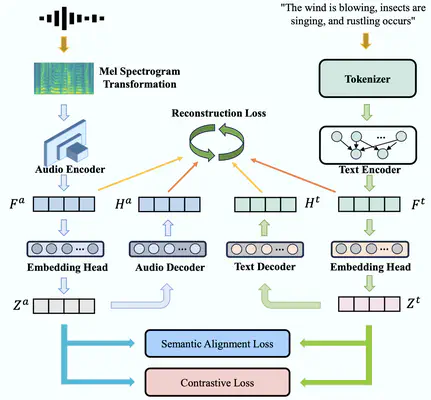 The overall workflow of CLSR
The overall workflow of CLSRAbstract
Cross-modal retrieval (CMR) has been widely applied in a wide range of applications, such as multimedia search engines, recommendation systems. Most existing CMR methods focus on image-to-text retrieval, whereas audio-to-text retrieval, a less explored domain, has posed a great challenge due to the difficulty to uncover discriminative features from audio clips and texts. Existing studies are restricted in the following two ways{:} 1) Most researchers utilize contrastive learning to construct a common subspace where similarities among data can be measured. However, they considers only cross-modal transformation, neglecting the intra-modal separability. Besides, the temperature parameter is not adaptively adjusted along with semantic guidance, which degrades the performance. 2) These methods do not take latent representation reconstruction into account, which is essential for semantic alignment. In this paper, we propose a novel method for audio-text cross-modal retrieval, termed Contrastive Latent Space Reconstruction Learning (CLSR). CLSR improves contrastive representation learning by taking intra-modal separability into account and adopting an adaptive temperature control strategy. Moreover, the latent representation reconstruction modules are embedded into the CMR framework, which improves modal interaction. Experiments on two audio-text datasets demonstrate that our approach outperforms some state-of-the-art methods.